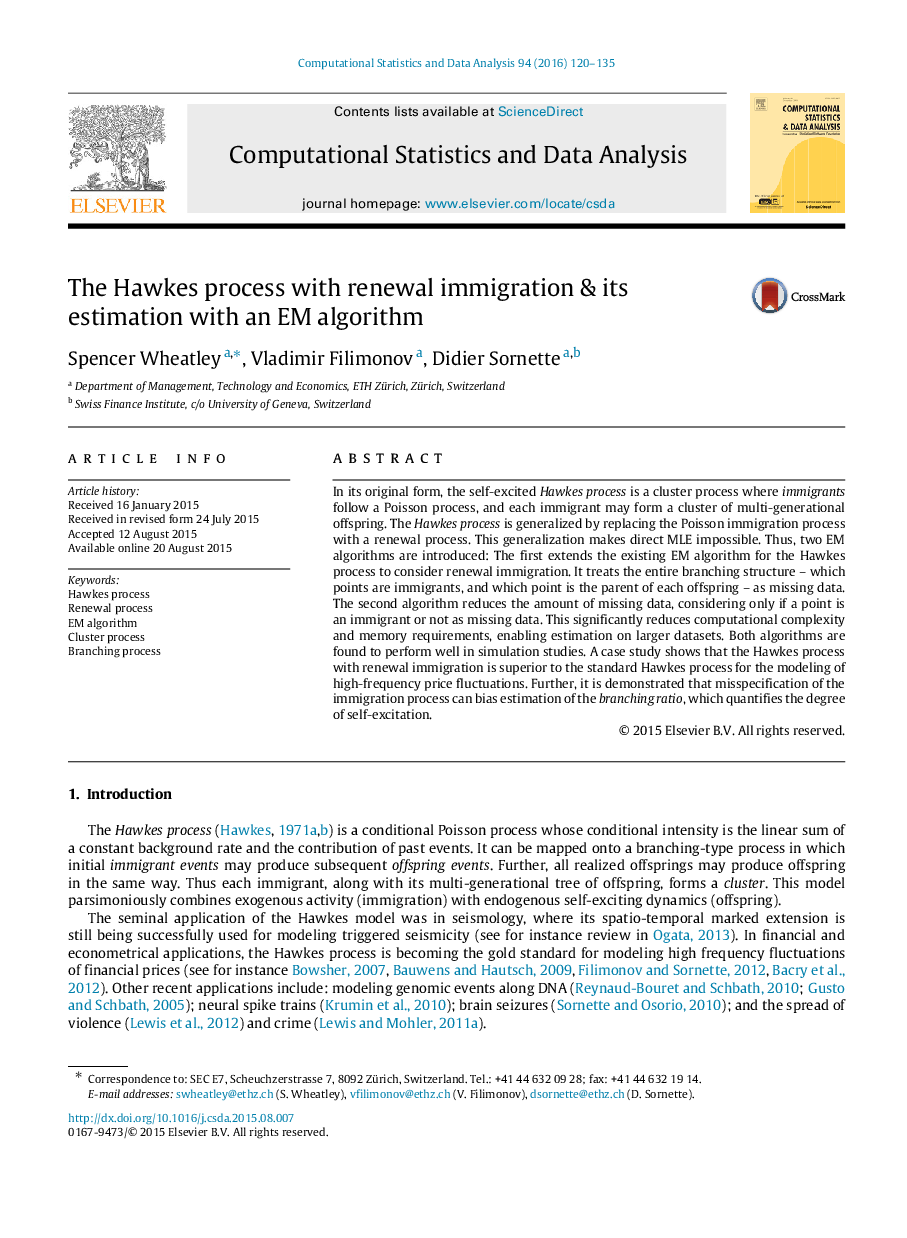| Article ID | Journal | Published Year | Pages | File Type |
|---|---|---|---|---|
| 6869423 | Computational Statistics & Data Analysis | 2016 | 16 Pages |
Abstract
In its original form, the self-excited Hawkes process is a cluster process where immigrants follow a Poisson process, and each immigrant may form a cluster of multi-generational offspring. The Hawkes process is generalized by replacing the Poisson immigration process with a renewal process. This generalization makes direct MLE impossible. Thus, two EM algorithms are introduced: The first extends the existing EM algorithm for the Hawkes process to consider renewal immigration. It treats the entire branching structure-which points are immigrants, and which point is the parent of each offspring-as missing data. The second algorithm reduces the amount of missing data, considering only if a point is an immigrant or not as missing data. This significantly reduces computational complexity and memory requirements, enabling estimation on larger datasets. Both algorithms are found to perform well in simulation studies. A case study shows that the Hawkes process with renewal immigration is superior to the standard Hawkes process for the modeling of high-frequency price fluctuations. Further, it is demonstrated that misspecification of the immigration process can bias estimation of the branching ratio, which quantifies the degree of self-excitation.
Related Topics
Physical Sciences and Engineering
Computer Science
Computational Theory and Mathematics
Authors
Spencer Wheatley, Vladimir Filimonov, Didier Sornette,
